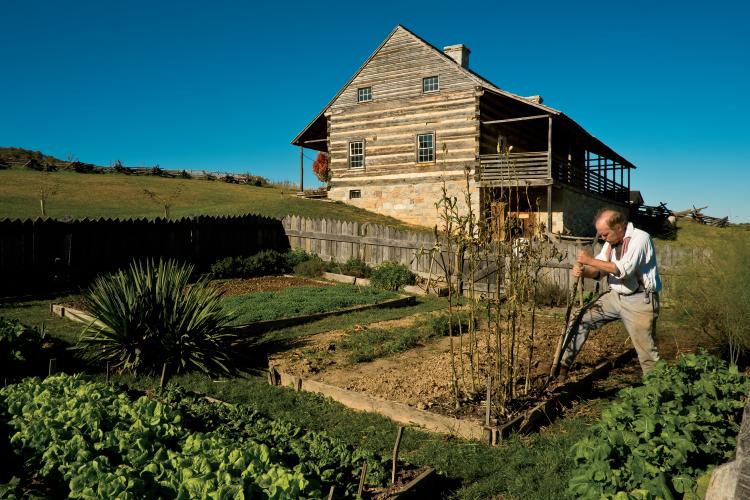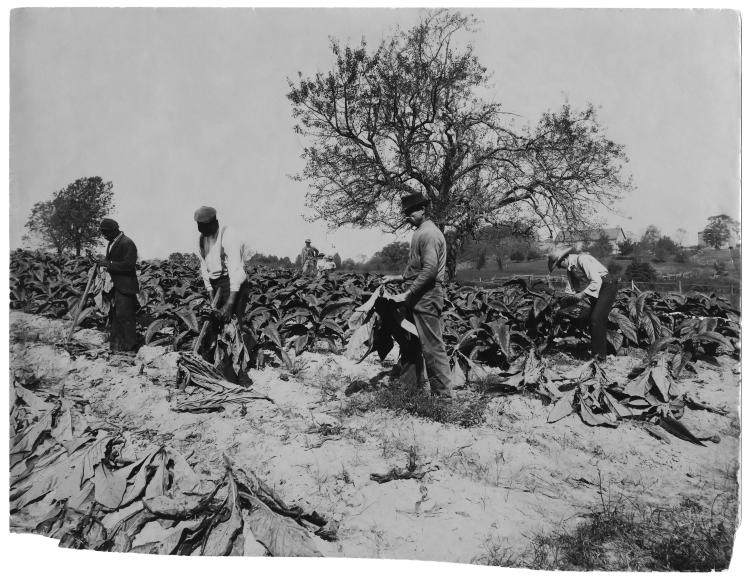Home > Virginia > Virginia Farm to Table > Our Founding Farmers: Virginia’s Agricultural History
Our Founding Farmers: Virginia’s Agricultural History
In partnership with: Virginia Department of Agriculture and Consumer Services

Virginia’s rich history in agricultural production dates back to the first settlement in America. Early colonists’ cultivation and livestock production led to the growing of peanuts and vegetables in the East Coast’s rich soil, the poultry and cattle in the north and central parts of the state, and the international trade of tobacco.
“Tobacco was one of, if not, the first exports from the colonies,” says Elaine Lidholm, director of communications for the Virginia Department of Agriculture and Consumer Services in Richmond, Va. “They sent it from Jamestown to England.”
The golden leaf today is still heavily traded by tobacco companies, widely used by consumers and taxed heavily by the states and federal government.
See More: As American as Apple Cider
“Virginia’s current tobacco industry can trace its roots back to the Commonwealth’s role as an agricultural powerhouse from the 17th century onwards,” says Caroline Legros, school program coordinator with the Virginia Historical Society in Richmond. “John Rolfe’s experimentation with different varieties of the crop helped shape the future of Virginia’s tobacco industry. Rolfe and his Powhatan advisors could be credited with helping the colony become one of England’s most powerful agricultural holdings.”
Early agriculture helped the Jamestown settlers persevere because they could grow food to feed themselves. “The climate was kind; the rivers, oceans and land were teeming with food,” Lidholm says. “And the Native Americans taught the settlers a great deal about cultivating plants.”
Those survival skills and education also led to hog and beef production used domestically and internationally today.
Learn More: Grow 6 plants that Thomas Jefferson grew
“Virginia ham is still famous around the world, as is Smithfield ham,” Lidholm says. “To be called Smithfield ham, a ham must be cured within the city limits of Smithfield, Va., for six months.”
The large kernelled, Virginia-type peanuts grown by Eastern farmers are widely sought by today’s American consumers. Strawberries, too, gained popularity thanks to the Commonwealth. “The common cultivar of today’s modern strawberry came from the virginius strawberry that grew in the wild here during the time of the settlement of Jamestown,” Lidholm says.

Washington’s Legacy
The first president of the United States spearheaded innovative farming practices and exploratory research.
“George Washington knew that, as a man of means, he had the luxury to experiment with crops,” says Melissa Wood, director of media relations for Washington’s Mount Vernon home. “Some Virginia farmers in the 18th century were not as fortunate. Washington’s advances in agriculture helped to establish a strong foundation for today’s Virginia farmers.”
Back in the 1760s, Washington began keeping records of crop plantings, something farmers are required to do today. According to information from Mount Vernon, his strict documentation became so precise that he often asked himself what he could do to improve production and increase profits, two important aspects that modern farmers apply today. His record-keeping also led to improvements and innovations in agriculture, and he researched more than 60 different crops on his 8,000-acre estate.
Washington’s inquisitive nature influenced today’s agriculture. Extensive research is conducted on campuses and farms by cooperative extension personnel at land-grant universities.

Early Ag Visionaries
Washington wasn’t the only Founding Father to analyze agriculture. Thomas Jefferson, principal author of the Declaration of Independence and third president of the United States, also conducted his own farming research in Charlottesville, Va. He converted a 3,000-acred tobacco plantation to grains, garden vegetables and fruit, according to the Thomas Jefferson Encyclopedia. At one time, he grew about 330 different varieties of more than 70 plants.
Thanks to this early research, Virginia’s agriculture, as well as that of the United States, was ready to advance by the 1800s. Inventor Cyrus McCormick, born in the state’s Shenandoah Valley, built a mechanical reaper that shortened grain harvest time and cut down on labor. He patented his invention in 1834 and introduced his machine to the grain growers of the Midwest.
See More: Lessons From Thomas Jefferson’s Garden
These great men’s forward-thinking paved the way for today’s foreign trade, crop rotation and application of future mechanical planters and harvesters for use in tobacco, grain, grapes, peanuts and other crops.
“Jefferson and Washington personified the ideal of a genteel Virginia planter of the 18th century, and their experimentation with different agricultural techniques and non-native species helped diversify Virginia’s flora,” Legros says. “McCormick’s work with the mechanical reaper set the pace for the industrialization in the 19th century and changed the way many farmers plied their trade.”



